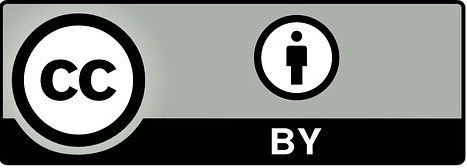Kordons Berlin: Representations and emotions of the German capital throughout the 20th century
DOI:
https://doi.org/10.17398/2660-7301.45.71Keywords:
Klaus Kordon, youth literature, spatial analysis, Berlin, 20th centuryAbstract
Klaus Kordon is a well-known author of German children’s and young adult literature. Large part of his work deals with the German history during the 20th century and is located in the city of Berlin. In the Trilogy of Turning Points, consisting of Die Roten Matrosen oder Ein vergessener Winter (1998), Mit dem Rücken zur Wand (1999) and Der erste Frühling (1999), Kordon draws a literary picture of the capital throughout the 20th century that is marked by socio-political changes which cause lively upheavals: end of the German Empire, 1930s, World War II and the subsequent post-war period.
After presenting selected theoretical foundations, the space and the involved experience of space will be examined in the three novels. The aim is to make the construction of Kordon’s image of Berlin comprehensible for the reader by emphasizing the emotional significance its places attain for and through the protagonists.
Downloads
References
BACHELARD, G. (1957): La poétique de l'espace. Paris: PUF.
BLÜMER, A. (2020): «Crossover-Literatur». In Kurwinkel, T. & Schmerheim, P. (Hg.): Handbuch Kinder-und Jugendliteratur. Stuttgart: JB Metzler, 9-13.
CLARK, C., & RUMBOLD, K. (2006): Reading for Pleasure: A Research Overview. London: National Literacy Trust.
DENNERLEIN, K. (2009): Narratologie des Raumes. Berlin-New York: de Gruyter.
EWERS, H. H. (1995): «Themen-, Formen- und Funktionswandel der westdeutschen Kinderliteratur seit Ende der 60er, Anfang der 70er Jahre». Zeitschrift für Germanistik, 5.2, 257-278.
HALLET, W. & NEUMANN, B. (Hg.) (2015): Raum und Bewegung in der Literatur: die Literaturwissenschaften und der Spatial Turn. Bielefeld: transcript-Verlag, 11-32.
HAUPT, B. (2004): «Zur Analyse des Raums». In Wenzel, P. (Hg.): Einführung in die Erzähltextanalyse. Kategorien, Modelle, Probleme. Trier: Wissenschaftlicher, 69-86.
KÜMMERLING-MEIBAUER, B. (2020): «Begriffsdefinitionen». In Kurwinkel, T. & Schmerheim, P. (Hg.): Handbuch Kinder-und Jugendliteratur. Stuttgart: JB Metzler, 3-8.
KORDON, K. (1998): Die roten Matrosen oder ein vergessener Winter. Weinheim-Basel: Beltz-Gelberg.
KORDON, K. (1999a): Mit dem Rücken zur Wand. Weinheim-Basel: Beltz-Gelberg.
KORDON, K. (1999b): Der erste Frühling. Weinheim-Basel: Beltz-Gelberg.
NIKOLAJEVA, M. (2013): «Children’s literature». In Fass, P. S. (Hg.): The Routledge history of childhood in the western world. London-New York: Routledge, 313-327.
NÜNNING, A. (2015): «Formen und Funktionen der Raumdarstellung: Grundlagen, Ansätze, narratologische Kategorien und neue Perspektiven». In Hallet, w. & Neumann, B. (Hg.): Raum und Bewegung in der Literatur: die Literaturwissenschaften und der Spatial Turn. Bielefeld: transcript-Verlag, 33-52.
SHAVIT, Z. (2005): A past without shadow: constructing the past in German books for children. London-New York: Routledge.
STANZEL, F. K. (2008): Theorie des Erzählens. Göttingen: UTB.
SCHAEFER, S. (2017): «Biste etwa einer von den roten Gebhardts?» Identities between Family and Society in Klaus Kordon’s «Trilogie der Wendepunkte». Theses. University of Waterloo (UWSpace, 1-66: http://hdl.handle.net/10012/11228).
STRÖKER, E. (1965): Philosophische Untersuchungen zum Raum. Frankfurt: Klostermann.
WÜRZBACH, N. (2001): «Erzählter Raum. Fiktionaler Baustein, kultureller Sinnträger, Ausdruck der Geschlechterordnung». In Helbig, J. (Hg.): Erzählen und Erzähltheorie im 20. Jahrhundert Festschrift für Wilhelm Füger. Heidelberg: Winter, 105-129.



